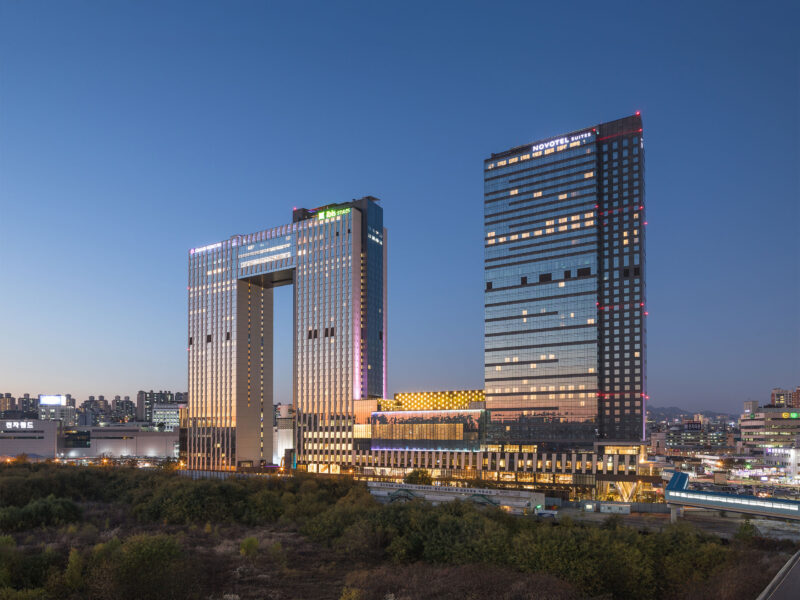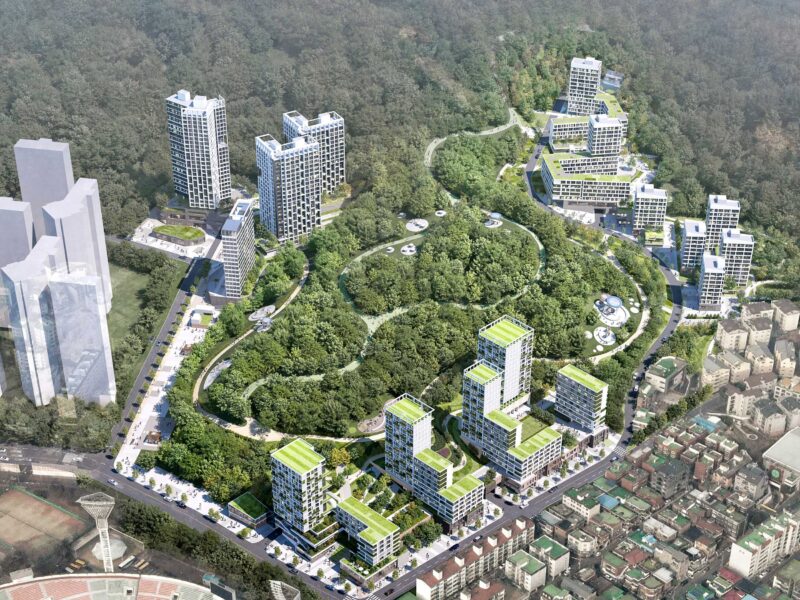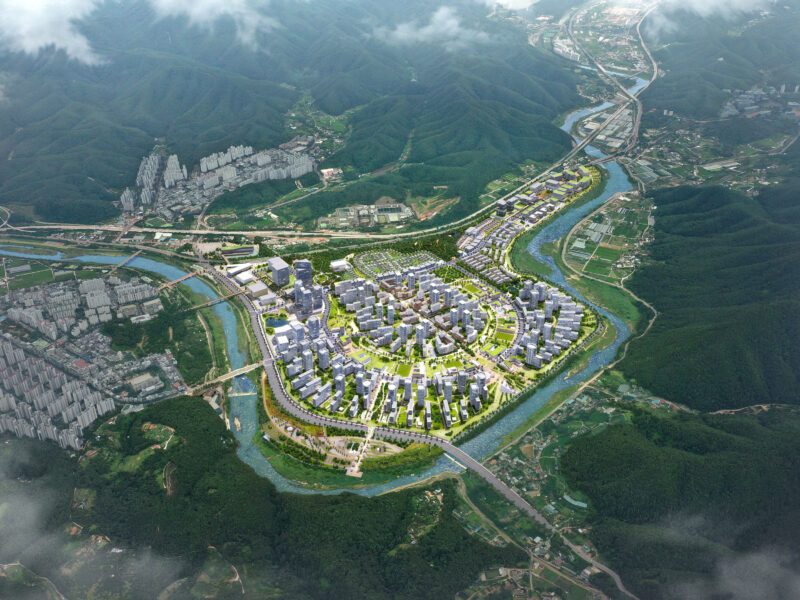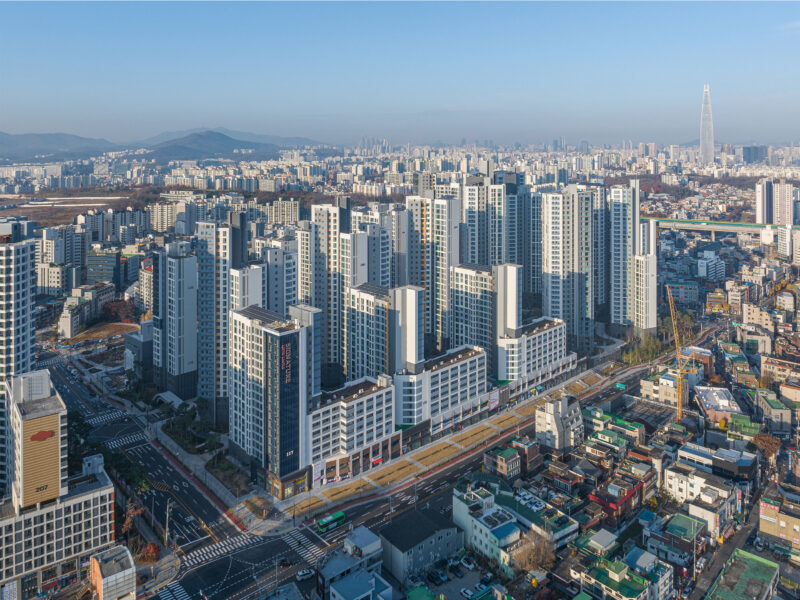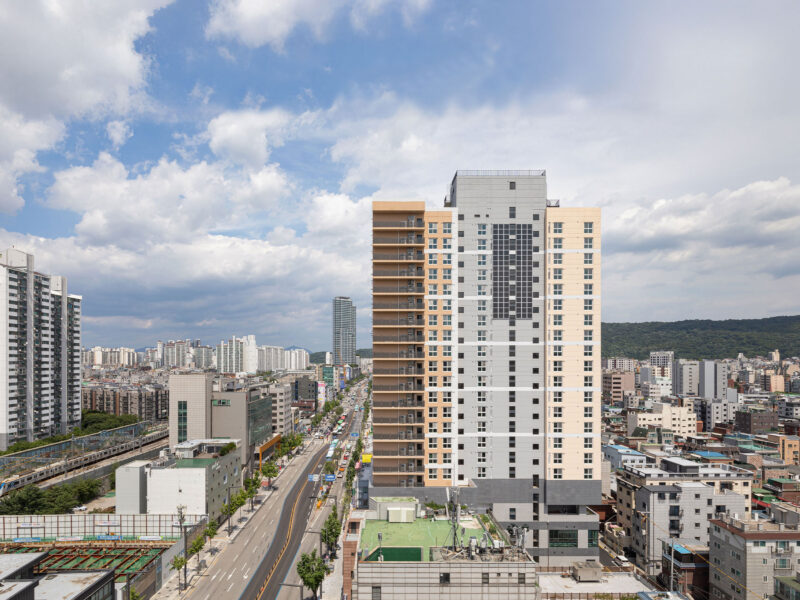
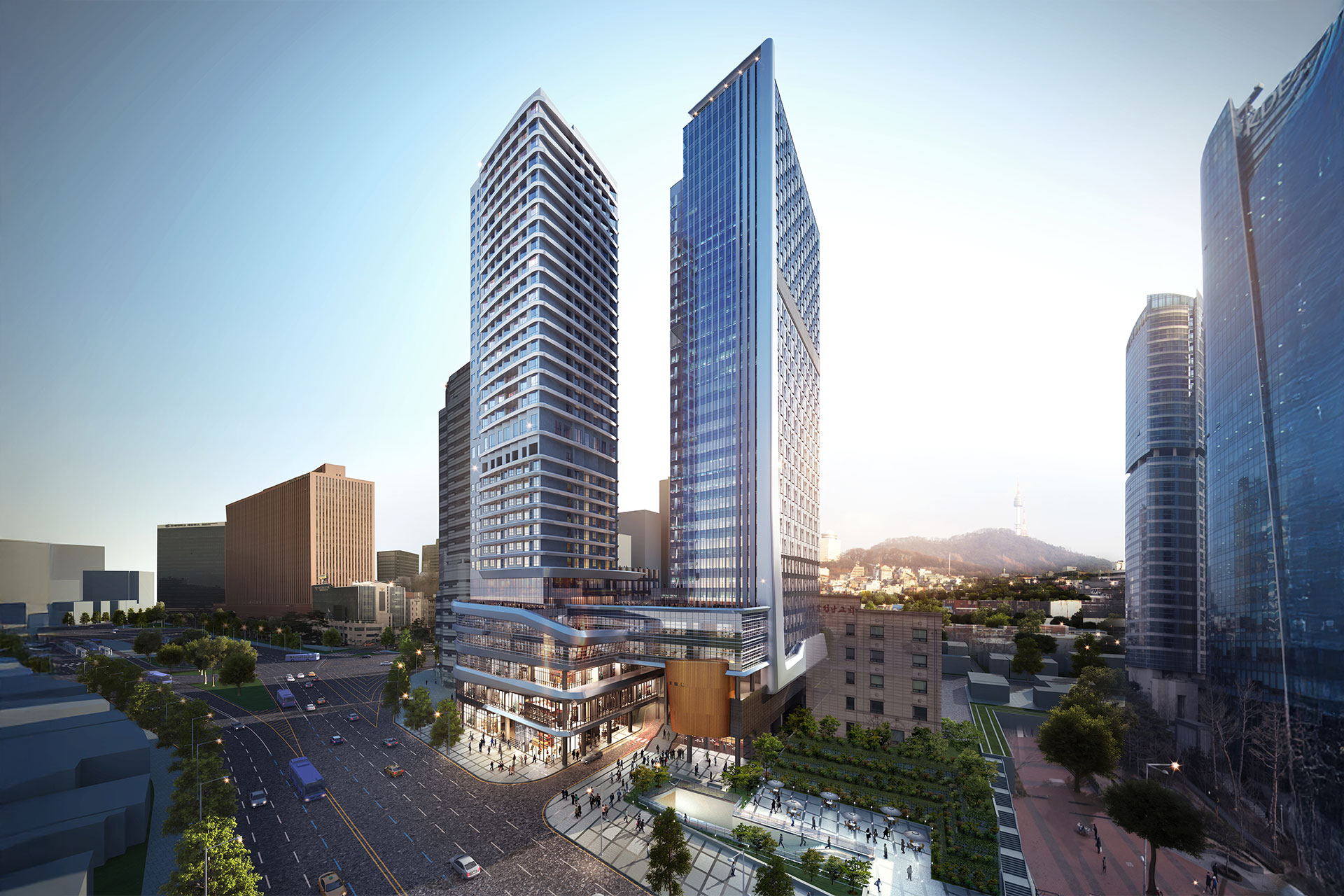
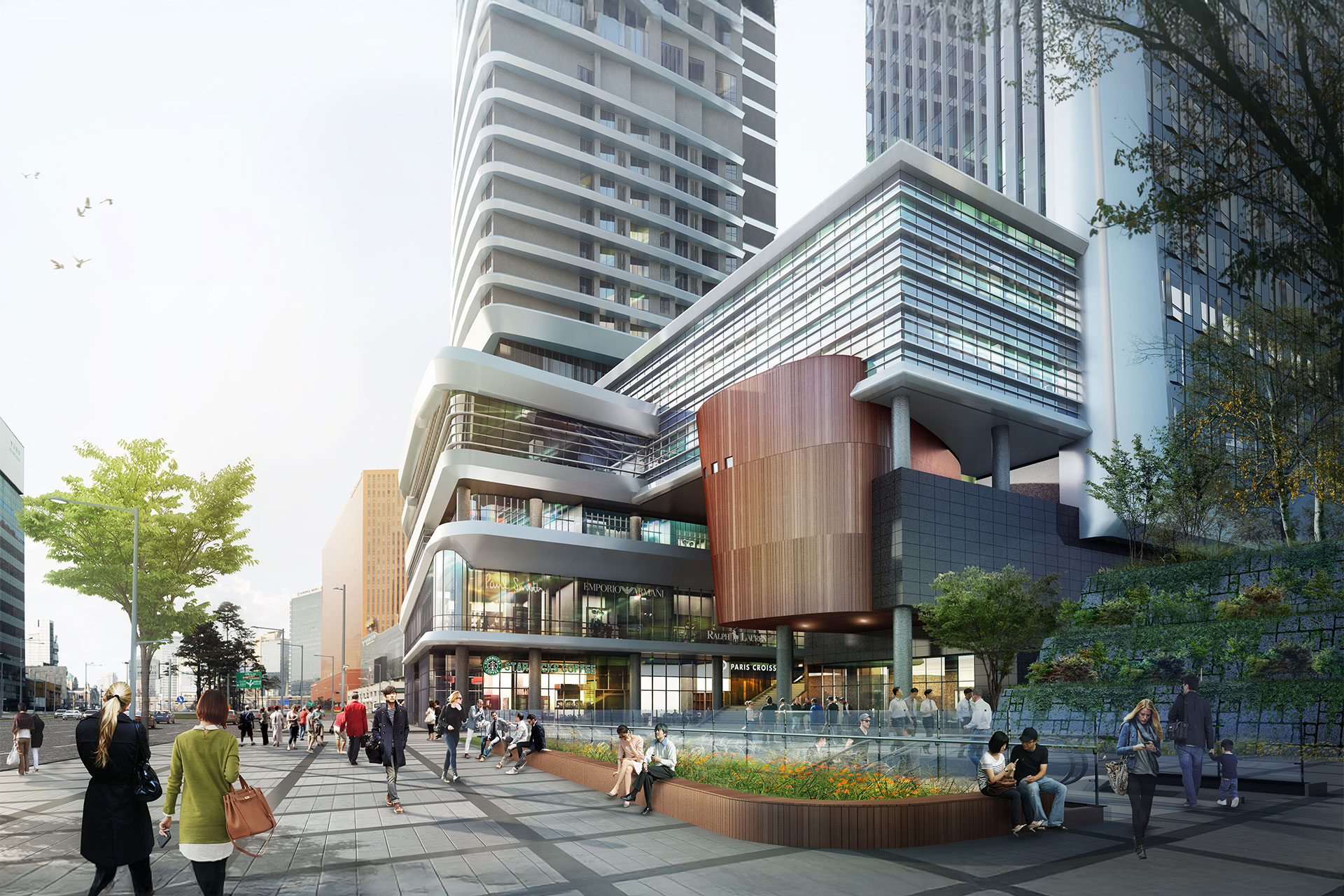
Dongja 2 District is located within an urban environment improvement zone near Seoul Station. Since Dongja-dong was designated for redevelopment in 1978, the changing project conditions made it a key issue to expedite various permissions and approvals to smoothly advance the development. This improvement plan designates lodging facilities as the primary use, alongside residential, office, and retail spaces.
The site’s topographical variations were utilized to distinctly separate access routes by usage type, and pedestrian pathways were planned to actively connect the sides of Hangang-daero Thoroughfare and Huam-ro Road, which could be physically severed by the buildings. Retail spaces were placed on the lower floors to activate street life, while the upper floors accommodate family hotels, residential units, business hotels, and office facilities. Auxiliary facilities maintain independence from other uses yet provide convenience for residents.
-
Status
Unrealized
-
Client
DB Life Insurance
-
Program
Urban Design & Planning, Mixed Use
-
Design Year
2015
-
Location
Yongsan-gu, Seoul
-
Site area
10,533.00m2
-
Gross Floor Area
122,809.19m2
-
Building Area
4,766.01m2
-
Number of Levels
B7, 33F
-
Design
-
Participants


Dongja 2 District is located within an urban environment improvement zone near Seoul Station. Since Dongja-dong was designated for redevelopment in 1978, the changing project conditions made it a key issue to expedite various permissions and approvals to smoothly advance the development. This improvement plan designates lodging facilities as the primary use, alongside residential, office, and retail spaces.
The site’s topographical variations were utilized to distinctly separate access routes by usage type, and pedestrian pathways were planned to actively connect the sides of Hangang-daero Thoroughfare and Huam-ro Road, which could be physically severed by the buildings. Retail spaces were placed on the lower floors to activate street life, while the upper floors accommodate family hotels, residential units, business hotels, and office facilities. Auxiliary facilities maintain independence from other uses yet provide convenience for residents.


